17 tips for fencing a country land
Imagine a suburban area without a fence is impossible. This design is not only necessary to highlight the boundaries of its territory and prevent unwanted entry by strangers, but also to protect the site from winds, dust and debris. The fence can also perform decorative roleif it is made taking into account the general style of the site. Before choosing a certain type of fencing for a summer cottage, it is necessary to determine the functions assigned to it and analyze the operating conditions.
No. 1. Fencing Type Selection Criteria
Fences rest on a number of tasks, among which the main:
- definition of boundaries;
- ensuring the security of the territory;
- plot decoration.
Each fence to one extent or another fulfills these functions, but since the summer cottage borders on different objects, some fences will perform these tasks to a greater or lesser extent. For instance, the fence that separates the plot from the street, the roads or a forest, it must be, first of all, reliable and provide protection, and the fence separating your site from the neighboring one serves mainly to determine the border and decorate the territory - it is not required to be capital and impregnable. In any case, the fence should be aesthetic and not spoil (or better decorate) the suburban area.
Of paramount importance when choosing the material of the fence is landscape design style. For plots made in the classical style, the best decoration will be stone, brick or forged fences, country style a wooden fence will decorate, and in a folk style a wicker fence will be appropriate. Well, if the fence, the house and other buildings on the territory will have some common features.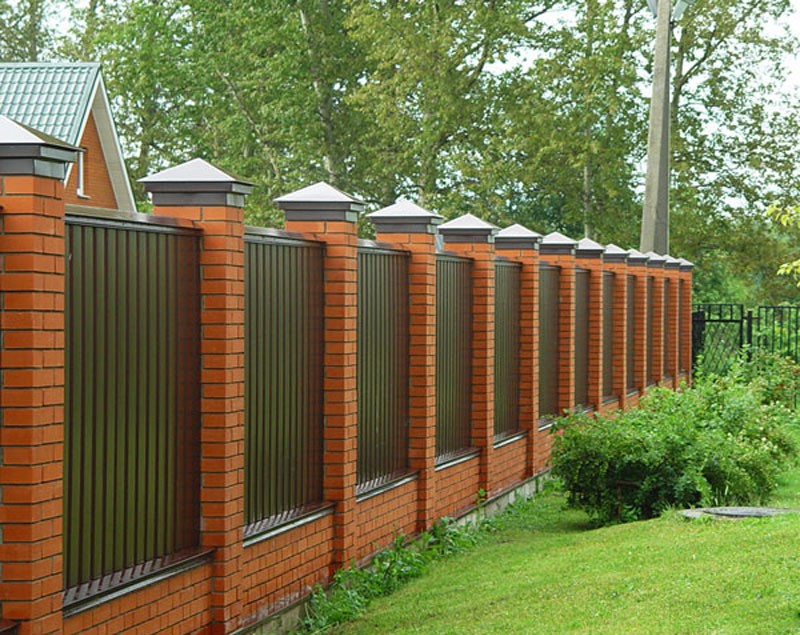
No. 2. Regulatory requirements for the fencing of the site
In order to avoid unnecessary trouble, even before the start of the construction of the fence, it is necessary to obtain resolution on its construction. If the project is carried out in compliance with all the rules put forward to country fencing, no problems will arise. According to regulatory documents, a fence separating two neighboring sections, must be no higher than 1.5 m and not obscure the surrounding area. Therefore, it is necessary to execute it from mesh or lattice materials. Fence height facing the streetmaybe reach 2 m. Such fences can be made of any materials, there are no transparency requirements.
Also regulated by the rules the distance of the fence from objects on the site: 3 m - for of houses and 4 m for pet enclosures. Before you put up a fence between your site and the neighboring one, you need to markup, and then coordinate the border with your neighbors. This will allow not only to maintain normal relations, but also to avoid further disputes over illegally seized land.
No. 3. Type of foundation for a country fence
Since the fence has protective functions, it must be reliable, strong and durable, which is impossible without an appropriate foundation. For the fence use one of the following options:
- tape foundation equips if the fencing is heavy. It requires digging a ditch with a minimum depth of 30 cm, which is covered with a layer crushed stone or gravel then set reinforcement cage and formwork, its height should be 20-30 cm above ground level. Then the formwork is poured concrete mortar;

- pillar foundation Suitable for fences, consisting of separate spans (net-netting, corrugated board, etc.). The distance between the pillars depends on the length of the spans. For each column, a pit is made with a depth of about 1 m, after installing the column, the pit is poured with cement-sand mortar.

Number 4. The main types of materials for the construction of fences
Options for garden fencing may be a lot. Fencing is made of the following types of materials:
- metal. This group includes both forged and welded structures, and mesh-netting, as well as fences from corrugated board;
- treeincluding lining, board and picket;
- brickstone and concrete;
- plastic and polycarbonate;
- original solutionssuch as a hedge, wicker fence, etc.
Each of these options requires detailed consideration.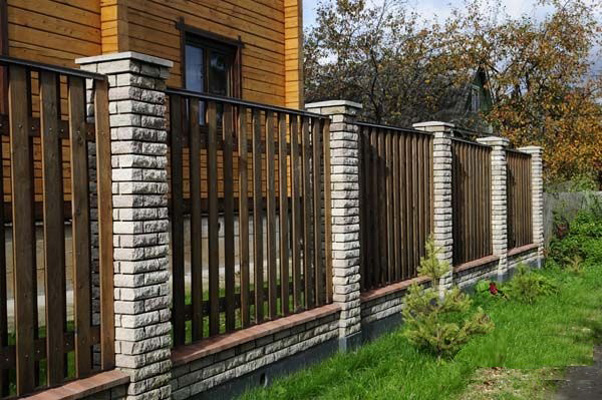
No. 5. Mesh fence
Fences from netting, corrugated and welded mesh - This is one of the most popular ways of fencing domestic summer cottages. It is not difficult to install such a fence on your own, the thickness of the wire should be at least 1.8 mm, so that it does not give in to the nippers.
Main advantages:
- low cost;
- high durability, reaching 30 years. The best in this regard are the galvanized mesh and the polymer coated mesh;
- resistance to any whims of nature;
- excellent light transmission. The mesh fence will not obscure the beds and will allow the most efficient use of the entire area of the site;
- good protection. Despite the fragility and transparency, the grid is not easy to overcome. It will swing under the weight of the attacker, and its upper part can cause injury;
- ease of installation and maintenance;
- high maintainability. If the mesh is damaged or sagging, it can be replaced or retightened.

Moreover, the mesh can serve as an excellent basis for climbing plants, including ivy and hops.
disadvantages:
- not the most aesthetic appearance;
- the grid will not cover the territory from the views of strangers - this is the reverse side of excellent light transmission.
A mesh fence is great for separating your territory from the neighboring one. On the small areas can be used as a main fence.
No. 6. Forged fence
Forged fence - it is a luxury and excellent appearance along with excellent performance. Such a fence is suitable for sections made in classic stylealways made by individual order and installed by professionals.
Main advantages:
- record longevity reaching 50 years or more;
- resistance to sunshine and winds;
- excellent decorative qualities;
- reliability and durability. Such a fence will be difficult to damage, and if there are elements in the form of sharp pins on top, then not everyone will be able to climb over such a fence and will be able to;
- good ventilation and light transmission;
- minimal care.

disadvantages:
- high price;
- large weight of sections, which complicates the transportation and installation process;
- metal can rust over time, so sometimes you have to treat the surface with special substances, but this is not so troublesome;
- transparency of the forged fence.
Forged fences are usually installed on the border of the site and the street, and since they do not hide everything that happens on the territory, they are recommended to be used when the site is large enough or located in a very quiet and impassable place. Often forged sections combined with stone, brick or concrete. 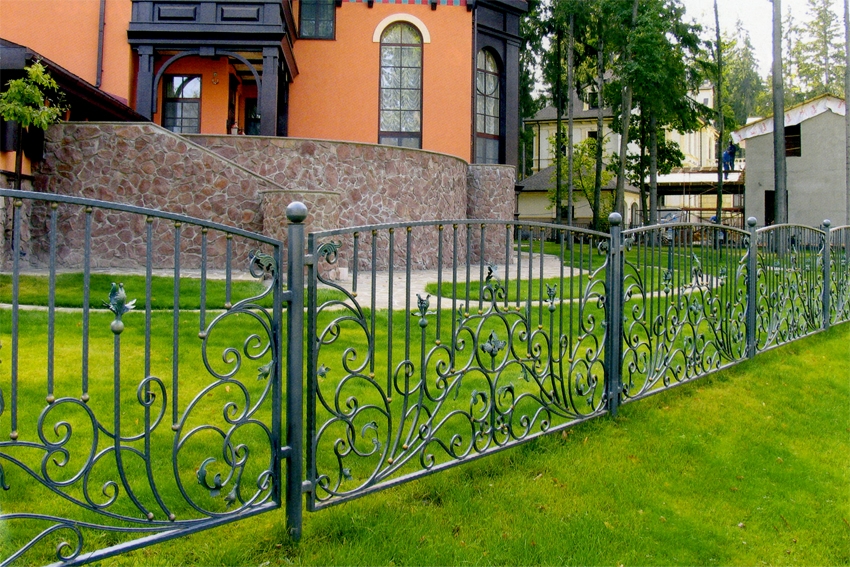
Number 7. Profile pipe fence and welded fence
These types of fences are alternative to forged fence. They are much cheaper, they are not inferior in basic operational qualities, but they look a little easier. For the manufacture of profile pipe fence pipes of round or square section are used. Sections of such a fence are 2-3 times cheaper than forged counterparts, durable, durable, do not require special care, have good aesthetic qualities.
For the manufacture of welded fences use not only pipes, but also rods and strips. The production process is quite simple, and there are many design options. While retaining all the advantages of a forged fence, such fences are 5 times cheaper. They can be combined with brick, stone and concrete pillars.
Number 8. Fence from corrugated board
Country fences are increasingly made from corrugated board. it sheets of steel with a protective zinc or polymer coatingand they can imitate wood or stone. Decking can be used to separate the site from the street, as well as for the construction of temporary fences for the period while work is underway on the construction of the house and other buildings.
Benefits:
- durability (up to 45 years), resistance to winds, sunshine, precipitation and other negative environmental factors;
- durability and excellent protective functions;
- reasonable cost and wide range;
- the ability to retain some external noise, therefore, such a fence can be used for sections located near roads;
- convenience in work, because the sheets are not very heavy and easy to cut;
- easy maintenance and high maintainability (you can replace a damaged sheet).

disadvantages:
- low aesthetics, especially from the inside;
- material does not provide ventilation.
Often sheets of corrugated board are combined with concrete or brick.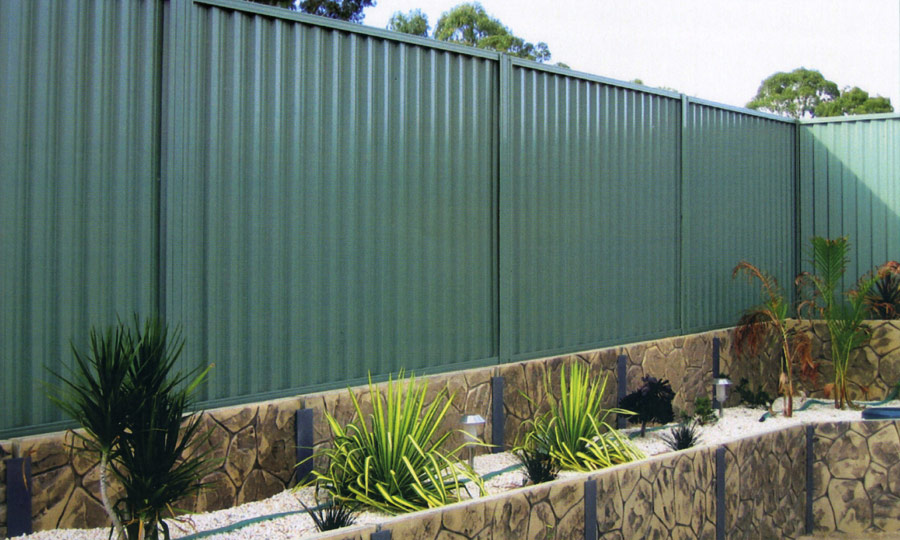
No. 9. Euro fence
Euro-piling is something between a wooden piling and corrugated board. It is made galvanized steel, which is additionally covered with a protective and decorative polymer layer. Externally, the euro-pallets are very looks like a treebut at the same time retains all the main advantages of corrugated board.
The material available on the market may vary significantly in the way the edges are processed, the type of profile, and the method of staining. It is sold in the form of strips up to 10 cm wide and 1.5 to 3 m long, provides ventilation of the site and transmits sunlight. However, a piece fence does not provide adequate strength to the fence.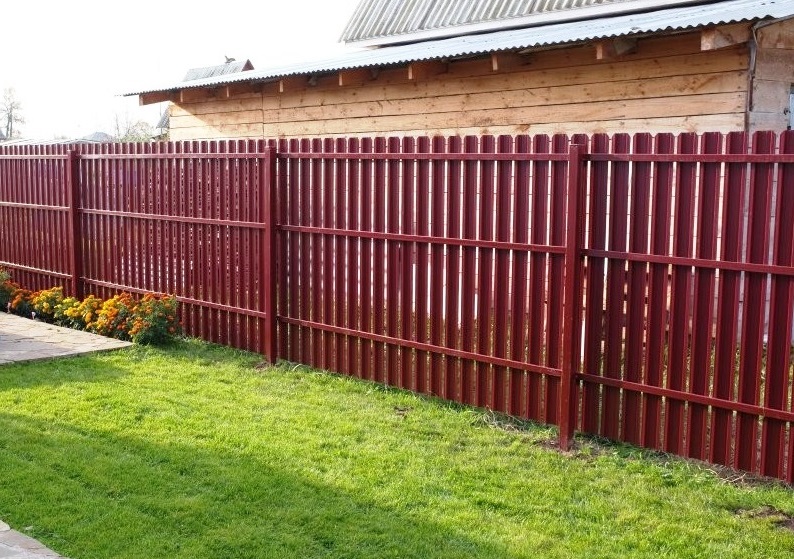
No. 10. Wooden fence
The wooden fence of the site is an ageless classic. Such a fence can be easily made and installed by one’s own hands, and due to the simplicity of wood processing, almost any idea can be turned into reality. The easiest option is to buy prefabricated sections of wooden fencingwhich, without exaggeration, is a huge selection. "Shop" products, as a rule, are sections of a wooden fence of any height and width, fastened with horizontal slats. Design can be any.
You can make a wooden fence yourself from polished or unedged boards, bars or even lining. Boards can be fastened at a certain distance from each other or without gaps. The tree can be given any shape and color it in required color or varnishcreating a fence that best matches the site in style.
Main advantages:
- high aesthetics and variability of solutions;
- low cost of ready-made fences and ease of creation with your own hands;
- naturalness and environmental friendliness;
- ease of installation;
- the ability to ventilate the area and transmit light (for certain types of construction).
disadvantages:
- low durability, susceptibility to decay. A wooden fence is unlikely to last more than 15 years, and then subject to constant care;
- the need for regular care, which consists in treating with an antiseptic, tinting, replacing boards;
- low level of protection;
- fear of fire.
A small wooden fence can serve to separate neighboring areas, as well as to enclose certain areas of the territory, flower beds, etc. An external wooden fence should have a decent height, and combining it with concrete or stone will provide the territory with better protection.
No. 11. Concrete Fence, or Eurofence
Concrete fence able to turn the site into an impregnable fortress. Gray boring solid reinforced concrete slabs although they continue to be used, they are inferior in popularity prefabricated concrete eurofences. The latter are concrete poles and panels that are manufactured according to standard technology, but are used when pouring decorative forms. Thanks to staining, the euro fence gets a good appearance and is easy can pass for stone or brick. It can be either deaf, open or partially open. Conventional reinforced concrete slabs cannot boast of such decorative qualities.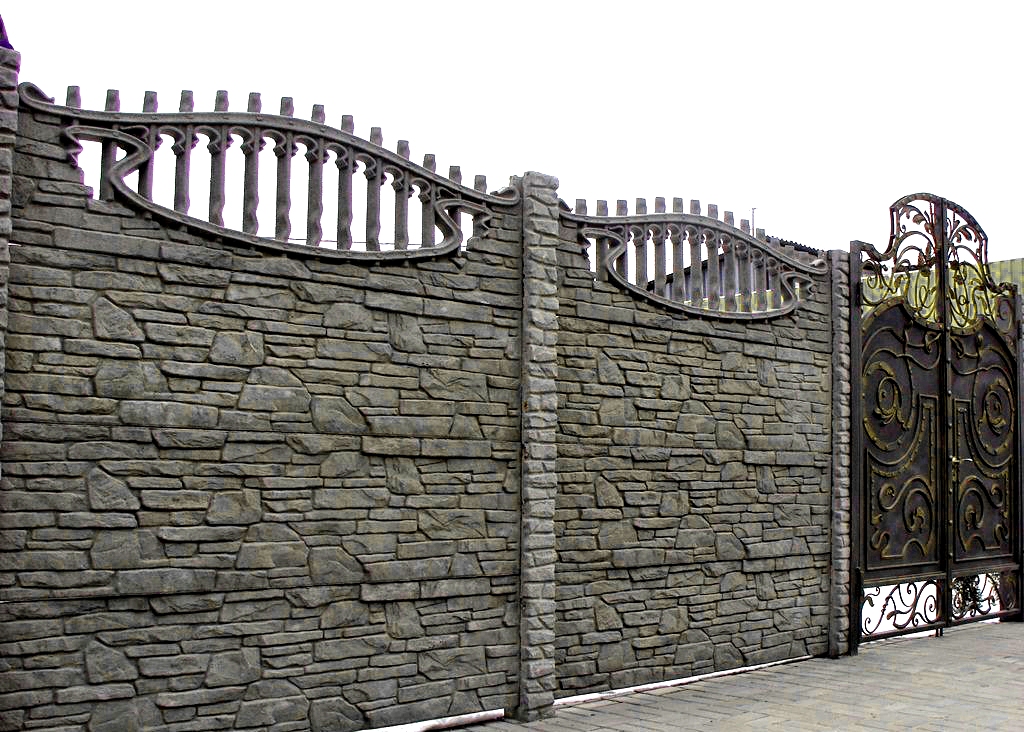
Benefits:
- high strength and durability, can last up to 100 years;
- the widest assortment of eurofence, which can imitate brick, slate, rubble stone, wood, and even have openwork elements;
- excellent protective functions;
- resistance to all negative environmental factors and to fire;
- unpretentiousness in leaving.

disadvantages:
- heavy weight, which greatly complicates the transportation and installation, - you can’t do it with your own efforts;
- high price (especially Euro fence), as there are high costs of delivery and installation.
Despite the existing shortcomings, a concrete fence is one of the best options for fencing a plot, since it will provide him with reliable protection for a long time, without requiring constant care.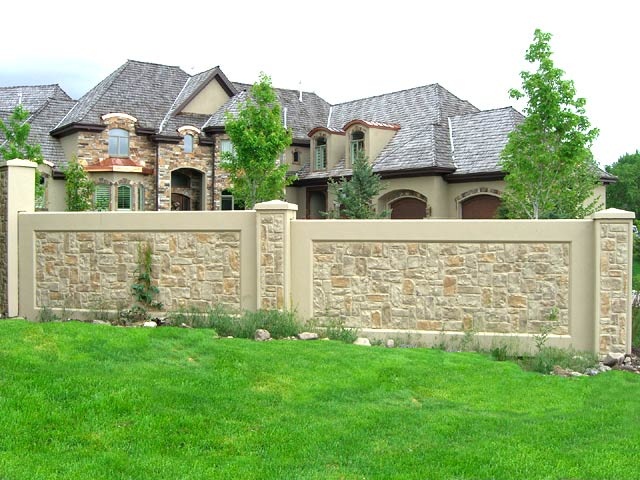
No. 12. Brick or stone fence
Similar properties bricks and stone allow you to combine them into one section. At the same time, it should be noted that with naturalness and higher durability of a stone, it is rarely used due to its high cost. To build even a small fence made of natural stone is a pleasure that not everyone can afford. A brick fence will be cheaper, but it will look no worse. What is stone, what is a brick fence is a capital construction that requires design, but such a fence can become the face of the entire site.
Benefits:
- durability (50 years for brick and above for stone);
- strength, reliability and a high level of protection;
- resistance to weather vagaries;
- environmental friendliness;
- excellent noise insulation qualities;
- fire resistance;
- ease of care;
- wide design possibilities. You can choose any color of the material, choose the necessary masonry pattern, combine brick or stone with metal or wood.
disadvantages:
- high price;
- complexity of installation.
Along with the fact that the brick fence protects from strong winds, it completely deprives the area of ventilation and creates a big shadow. An exception is a combination of brick and metal.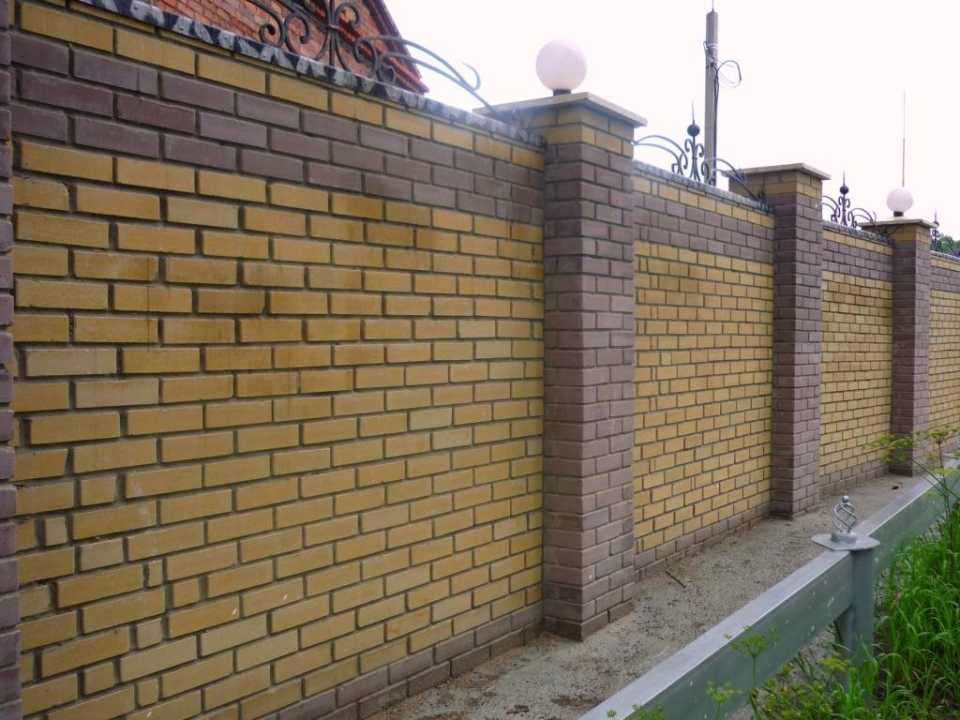
No. 13. Polycarbonate Fence
Polycarbonate is traditionally used for arranging canopies and canopies, often used in construction greenhouses. Available in the form of light large slightly bent translucent sheets of different colors. Sheets polycarbonate mounted on a metal frame, and when combined with other materials, it is possible to achieve good results in terms of aesthetics.
Benefits:
- a light weight;
- flexibility to experiment with the shape of the fence;
- translucency.Polycarbonate transmits up to 90% of sunlight, but it does not allow outsiders to see what is happening on the site;
- not bad soundproof quality, which is explained by the presence of air inside the cells;
- resistance to high and low temperatures, direct sunlight and moisture. Polycarbonate is not subject to corrosion or decay, it will not develop on it mold;
- simple care, which consists in periodically washing the material using a conventional garden hose;
- aesthetic appearance.

disadvantages:
- not the lowest price;
- the need to build a solid metal frame so that the sheets do not “lead” from wind and mechanical loads;
- low strength. Over time, scratches will occur on the polycarbonate, and it is not recommended to hit or throw stones at it. When combining the material with brick and forged gratings, this disadvantage can be significantly minimized.
No. 14. PVC Fence
Plastic fences, very popular in Western countries, have recently begun to conquer the domestic market. They are highly decorative and can imitate a mass of natural materials, but their choice is not so great. A plastic fence can be used for zoning the site, fencing flower beds, children's play area. It can be used as the main fence only when there is one requirement for the fence - to show the boundaries of the site, and not serve as protection against intruders and prying eyes.
Benefits:
- excellent appearance;
- low weight, ease of installation and maintenance;
- high durability (up to 50 years);
- resistance to sunshine, low temperatures and moisture.

disadvantages:
- low strength and vulnerability to mechanical damage;
- low resistance to wind loads;
- high price.
Number 15. Wicker fence
If the garden is made in a rustic style, then a wicker fence will become its best decoration. It is not difficult to make it yourself, and for this you will have to stock up with branches of willow, hazel, or other flexible plants. The height of the fence can be either minimal (for flower beds and zoning of the site), or medium (to separate the territory from the neighboring one) or even large (to fence the site along the perimeter).
Benefits:
- excellent appearance, environmental friendliness and naturalness;
- minimum cost if you make a fence with your own hands. Ordering a finished fence from the rod will also cost inexpensively;
- the ability to experiment with the type of weaving and height of the fence.

disadvantages:
- low strength. The wicker fence for the most part performs decorative functions, which is why no expectations are placed on it regarding high reliability;
- low durability;
- the need for minimal skills and patience to create a wicker fence with your own hands.
No. 16. Hedge
One of the most aesthetic and environmentally friendly options for fencing a summer cottage is the creation of a hedge. Plants such as boxwood, juniper, spruce, hawthorn, privet, yew, thuja western other. Such a fence will require a lot of effort and time, it will always be necessary to take care of it, as well as other plants in the country, but the hedge looks amazing.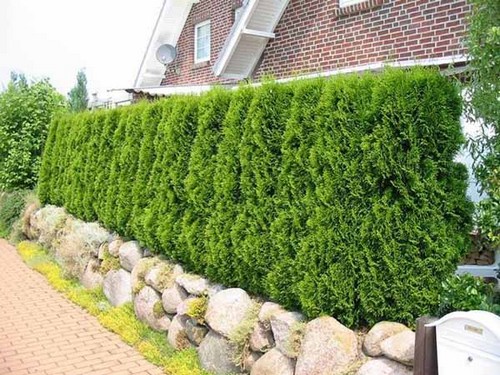
Benefits:
- appearance and the ability to give it almost any shape, change the design and height over time;
- environmental friendliness. Plants will trap dust and noise;
- using prickly plants (for example, hawthorn), you can get reliable protection of the site;
- low cost;
- wind resistance and airing.

disadvantages:
- the need for constant care: watering, top dressing, cutting, etc .;
- the need to wait until a normal and dense hedge grows;
- Good knowledge of horticulture and dendrology will be required, or it will be necessary to consult a specialist.
Number 17. Other interesting materials
As a fence you can use:
- slate. Today slate not as popular in the arrangement of country fences as ten years ago, but still there are people who want to build such an inexpensive and functional fence. The advantages of the material are low cost, ease of installation, resistance to weather vagaries and the ability to close the site from the prying eyes of strangers. Cons: low aesthetics and instability before point hits;
- gabions - blocks of metal mesh and stone;
- wire, which is pulled onto the supports.
Some craftsmen even plastic bottles manage to use to create a fence.
In conclusion
At one site, you can freely combine several fencing options, or use a fence of the same material, but make it of different heights in different parts of the territory. Do not forget about the possibility to decorate fences, for which anything can be used: from flowers to kitchen utensils.

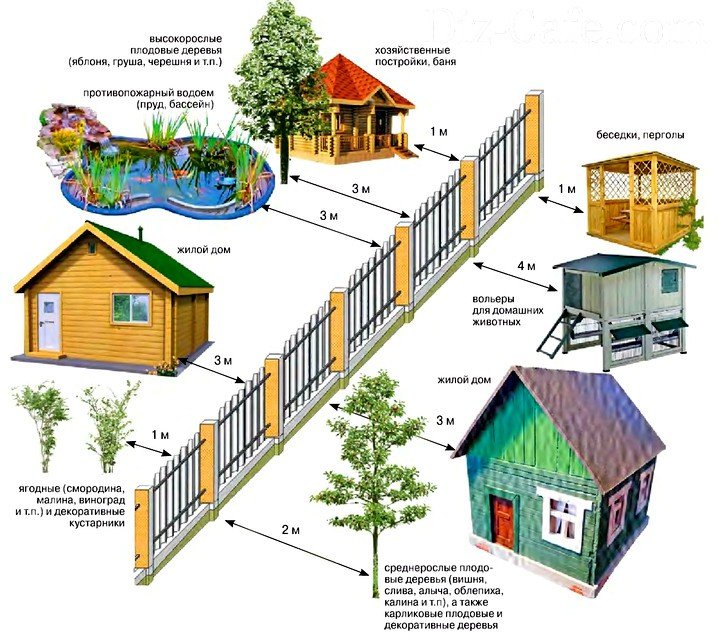

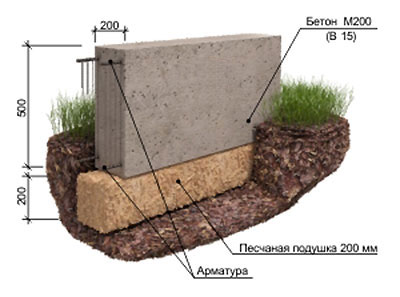
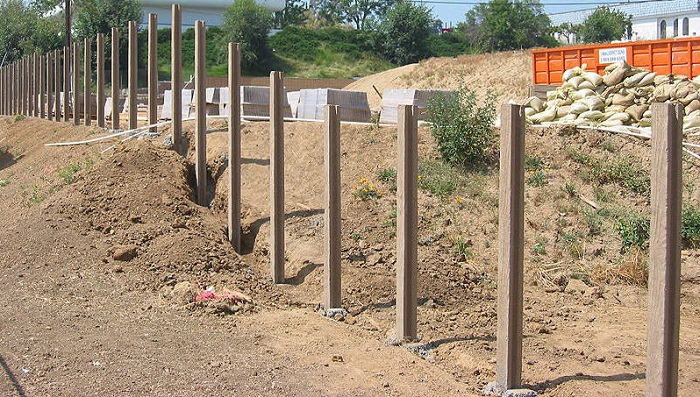

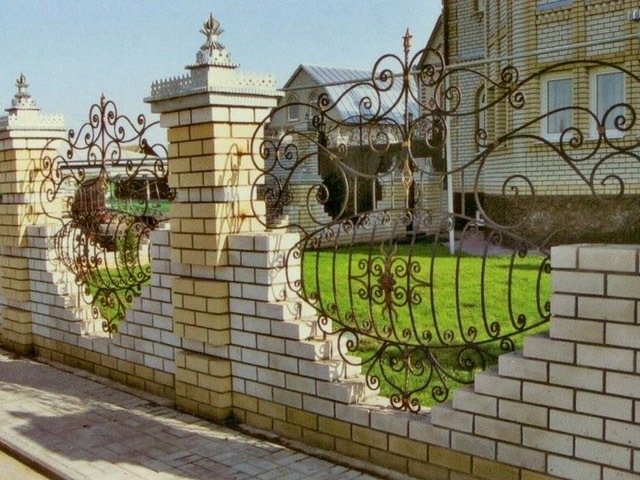
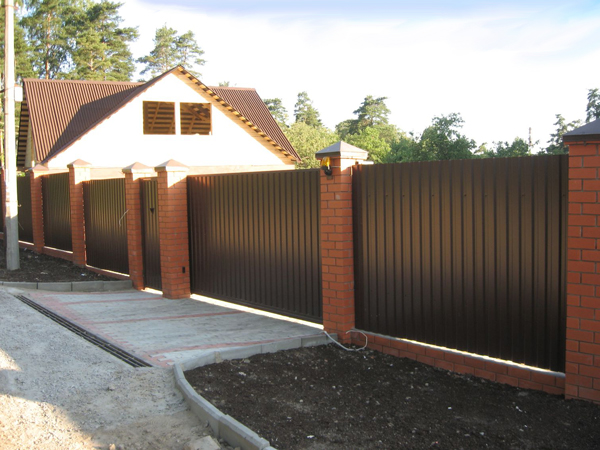

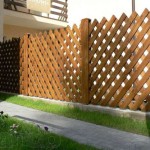

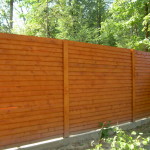








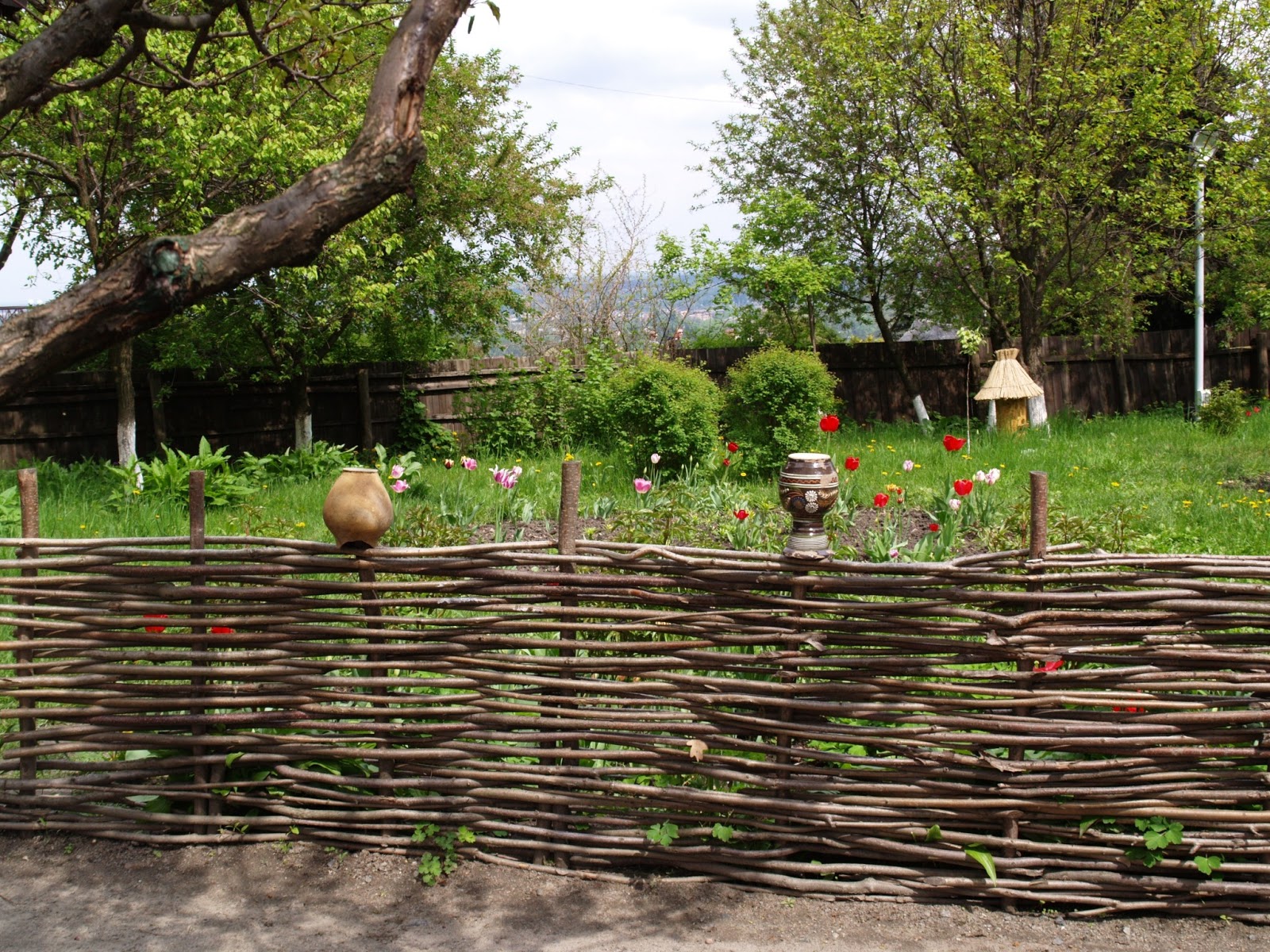


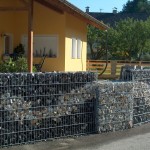

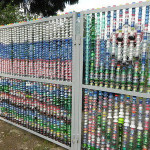
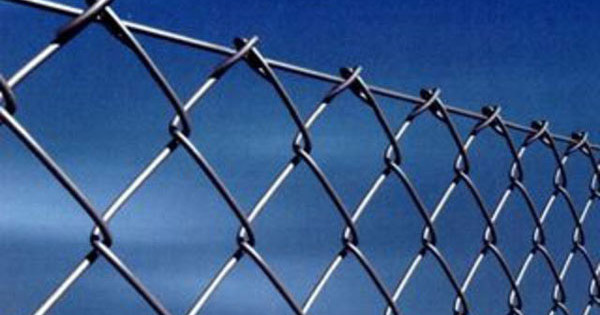
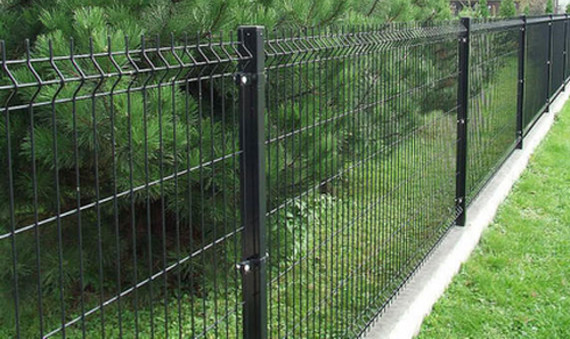
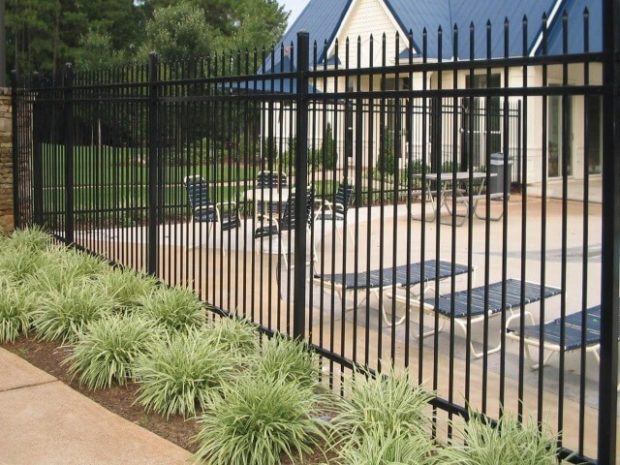
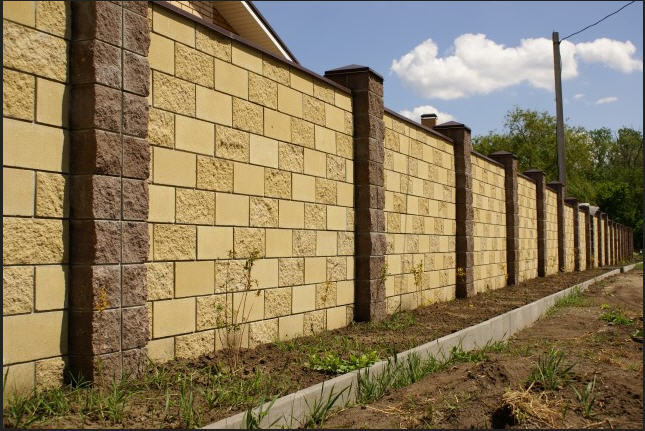
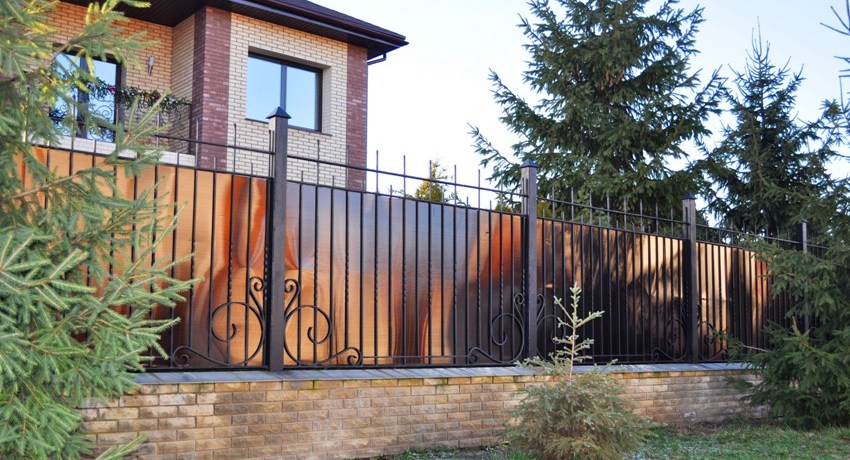
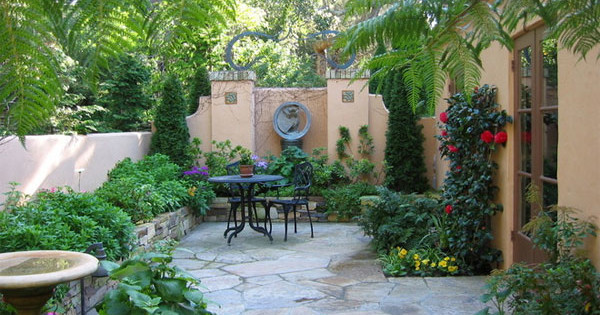
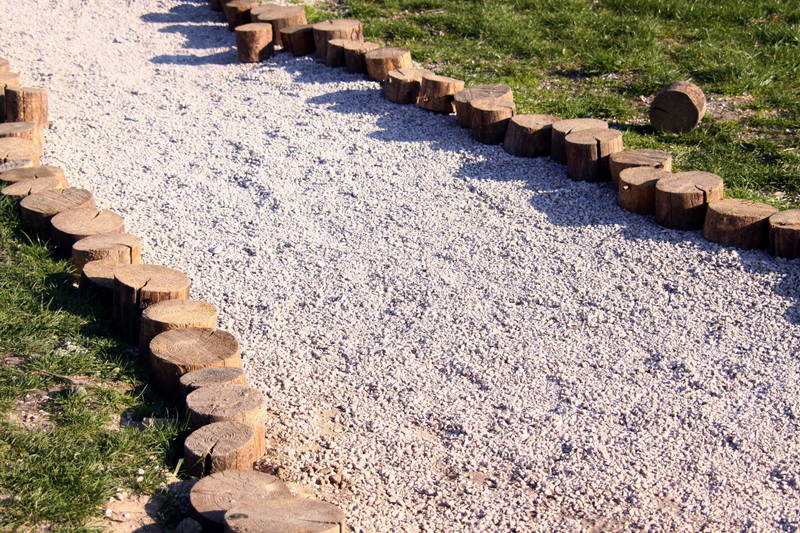
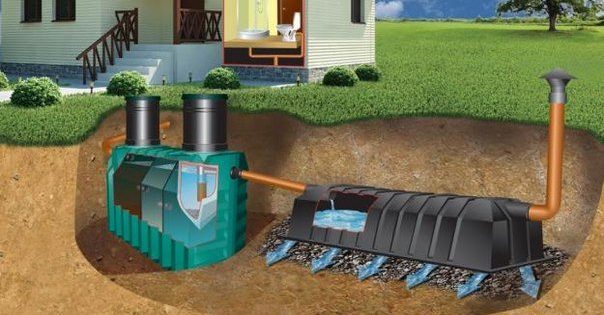
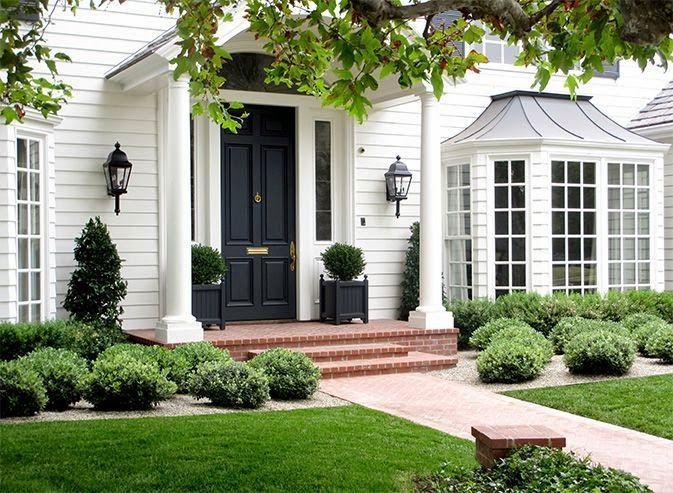
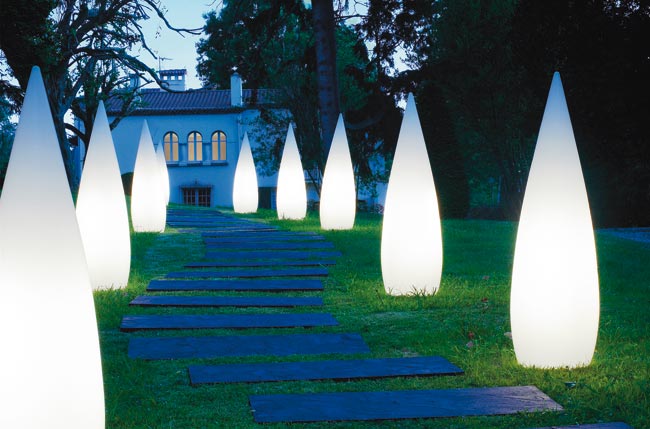
Who knows how to install a fence between two summer cottages if they are separated by a water pipe? The border runs under the pipe. Tell me.